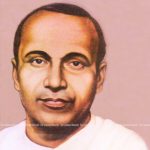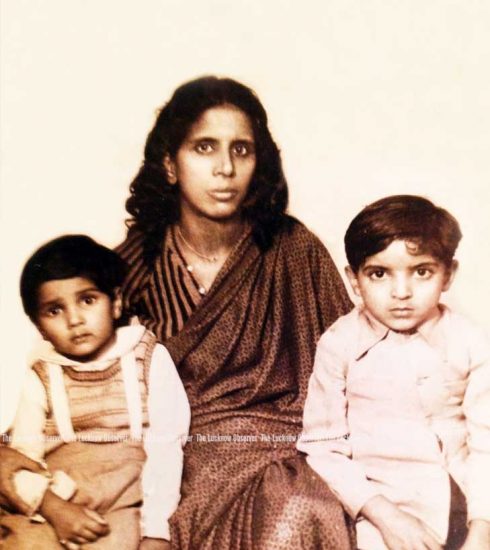Qurratulain Hyder
A Pioneer of Urdu Fiction
Born on 20 January 1927 in Aligarh, Uttar Pradesh, (though her family were from Nehtaur, UP), Qurrat-ul-Ain Hyder is one of the most celebrated Urdu fiction writers. She was named after a notable Iranian poet Qurrat-ul-AinTahira.
She was an influential Indian Urdu novelist and short story writer, an academic, and a journalist. One of the most outstanding literary names in Urdu literature, she is most known for her magnum opus, Aag Ka Darya (River of Fire), a novel first published in Urdu in 1959, from Lahore, Pakistan, that stretches from the 4th century BC to post partition of India. Popularly known as “Ainee Apa” among her friends and admirers, she was the daughter of writer and pioneers of Urdu short story writing Sajjad Haidar Yildarim (1880–1943). Her mother, Nazar Zahra, who wrote at first as Bint-i-Nazrul Baqar and later as Nazar Sajjad Hyder (1894–1967), was also a novelist.
A trend setter in Urdu fiction, she began writing at a time when the novel was yet to take deep roots as a serious genre in the poetry-oriented world of Urdu literature. She instilled in it a new sensibility and brought into its fold strands of thought and imagination hitherto unexplored. She is widely regarded as the “Grande Dame” of Urdu literature.
After finishing her education from Indraprastha College, Delhi and Lucknow University’s Isabella Thoburn College, she migrated along with her family members to Pakistan in 1947 at the time of independence, then lived in England for some time before finally returning to India in 1960, where she had since lived. She worked as a journalist to earn her living but kept publishing short stories, literary translations and novels regularly, by now almost thirty in number. She was Managing Editor of the magazine Imprint, Bombay (1964–68), and a member of the editorial staff of the Illustrated Weekly of India (1968–75). She lived in Bombay for nearly twenty years before shifting to Noida near New Delhi, where she had been staying till her demise.
Hyder also served as a guest lecturer at the universities of California, Chicago, Wisconsin, and Arizona. She was visiting professor at the Urdu Department at Aligarh Muslim University, where her father had earlier been a registrar. She was also Professor Emeritus, Khan Abdul Ghaffar Khan Chair at Jamia Millia Islamia, New Delhi. In 1979 she was in residency at the University of Iowa’s International Writing Program.
A prolific writer (she began to write at the young age of 11), her literary works include some 12 novels and novellas and four collections of short stories. Hyder has also done a significant amount of translation of classics. Her own works have been translated into English and other languages.
Aag Ka Dariya (River of Fire), her magnum opus, is a landmark novel that explores the vast sweep of time and history. It tells a story that moves from the fourth century BC to the post-Independence period in India and Pakistan, pausing at the many crucial epochs of history. Aag Ka Dariya is essentially a novel written from the point of view of the believers of Pakistan and depicts their agony in detail, specially towards the climax of the novel.
Her other published works include:MereBhiSanamKhane which she wrote at the tender age of 19, in 1949; ‘Safina-e-Gham-e-Dil’, 1952; ‘Patjhar ki Awaz’ (The Voice of Autumn), 1965; Raushni ki Raftar (The Speed of Light), 1982; the short novel Chaye ke Bagh (Tea Plantations), 1965 (one of four novellas including Dilruba , Sita Haran , Agle Janam Mohe Bitiya Na Kijo , (exploring gender injustice) ; and the family chronicle Kar e Jahan Daraz Hai (The Work of the World Goes On). Her first short story, Bi- Chuhiya (Little Miss Mouse), was published in children’s
magazine Phool.
She received the Jnanpith Award in 1989 for her novel Aakhir-e-Shab ke Hamsafar (Travellers Unto the Night), and the Sahitya Akademi Award, in Urdu for Patjhar Ki Awaz (The Sound of Falling Leaves) in1967, Soviet Land Nehru Award in 1969, Ghalib Award, 1985. The Urdu Academy in Delhi conferred upon her the Bahadur Shah Zafar Award in 2000. India’s National Academy of Letters, the Sahitya Akademi Fellowship in 1994. She was conferred Padma Shri by the Government of India in 1984, and in 2005 she was conferred the Padma Bhushan the third highest civilian honour awarded by the Government of India, for her contribution to Urdu Literature and education.
Qurratulain Hyder died in a hospital of Noida, near New Delhi, India on 21 August 2007 after a protracted lung illness. She has been buried in the Jamia Millia Islamia cemetery, New Delhi.
Akansha
Writer a is student, an aspiring painter & calligrapher
(Published in The Lucknow Observer, Volume 1 Issue 10, Dated 05 January 2015)








